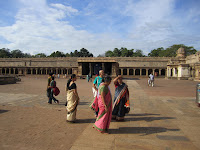Planning your summer vacation?
I'll give you 13 reasons to holiday in Kashmir this year.
1. The roadblock such as political unrest and militancy in Kashmir has fizzled down which is evident in the upsurge of tourism figures of Kashmir in 2011 which state that in the last 20 years, the year 2011 saw the highest number of tourists visiting Kashmir – more than 10 lakh tourists apart from the 1 crore-plus pilgrims who visited Mata Vaishnodevi’s Shrine and the 7 lakh pilgrims who took the Amarnath Yatra. This boost in tourism in Kashmir has revved up the Government’s plan for better tourist trails and trip packages and amenities this year to keep the momentum going and for a strong hold on the long-awaited triumph of Kashmir Tourism.
2. Winter is over and the snowy mountains are friendlier now for adventure snow sports such as snow-strolling, snow-rolling, snow-skiing, snowboarding, sledding and snow-shoeing or just mountain-scaling. Or how about you just hover over the snowy mountains in one of theworld’s highest gondola cable cars? And if you are trained and have nerves of steel, how about you try helicopter skiing at 12,000 feet?
3. The Himalayan rivers and springs run again in Kashmir after a dormant freeze-period making it a happening place for adventure water sports such as river-rafting, kayaking, canoeing,boating and not to mention trout-fishing and fishing in general.
4. The Lakes of Kashmir – Mountain-lakes as well as the lakes at the glaciers have thawed and add splendour to the landscape and provide excellent boating, camping and picnic spots.
5. The Mughal Gardens have turned bright plush green and present to you ‘Royal Walks’ in the centuries-old gardens with ponds, waterfalls and fountains. The dense Cedar Woods are waiting to woo you.
6. Multi-coloured flowers are in full bloom for miles together in mountain valleys as well as in the plains. The Tulip Garden in April is like Holland in spring. World’s most expensive spice –Saffron is in full purple-bloom for hundreds of acres. The Rose Gardens add ornamental value to these landscapes with their beautiful multi-coloured presence.
7. The wildlife in these high-altitude National Parks, Sanctuaries and Biospheres is out to soak up the sun and to let you see them and photograph them.
8. The high altitude trekking trails through mountains, valleys and meadows and grasslands are ready to take you places you have never been before. And camp in the most gorgeous never-even-considered-sites of the country.
9. The chill air has cleared up and has made the skies more paragliding-friendly.
10. World’s highest motorable pass – Khardung La has gone a little easy on the snow and is waiting to challenge the foreign and domestic dexterous bikers.
11. World’s 7th highest golf course – among the other golf courses in Kashmir, is waiting to play it rough and tough with you at 9000 feet altitude.
12. And shopping!!!!!!!!!! Tibetan handicrafts and Kashmiri handicrafts especially the precious stones-studded silver jewelry and woollen carpets and other wooden and silver handicrafts just keep taking newer and more attractive dimensions to suit global markets. Need I entice you more?
13. And of course, Shri Amarnathji and Goddess Vaishnodevi and Lord Buddha beckon you for an annual visit to their abode on earth!
And when winter sets in again....get set for the world famous and much awaited Chader Trek on the frozen River Zanksar !!

















